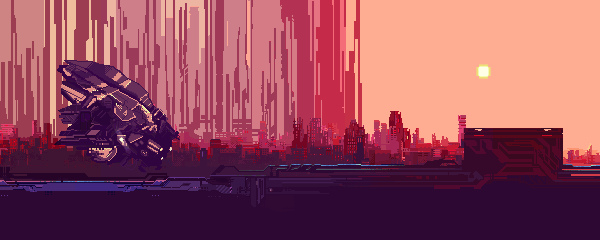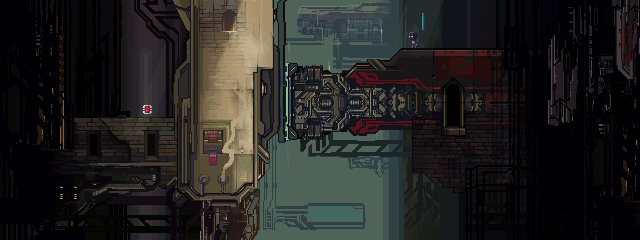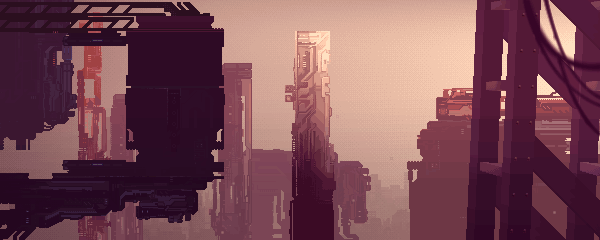The triumphant return of 5734L3R, one of the most beautiful pieces of vaporware ever

There’s a pre-requisite digital age literacy required in order to decode the word “5734L3R.” It’s not particularly difficult to parse if you’re a “nethead,” as the early internet users of the 1990s referred to themselves (a subculture that rapidly expanded), but anyone not so immersed in computer culture is more likely to furrow their brows at the suggestion.
It’s the word “STEALER” written with numbers—the 5 being an ‘S’, the 7 an awkward ‘T’, while the 3 is a backwards ‘E’. Even if this alphabet seems alien, you’ll probably be familiar with its central role as the entertainment of the high school mathematics class; spelling “BOOBS” on a calculator with eights, zeroes, and a five.
the idea that the world is as central to the game as the main character
This appropriation of computer language has disseminated over the years since the 1960s, which was when the first solid state electronic calculators were introduced, it going on to be known as “1337 speak” (elite speak) due to its usage by internet forum users looking for a way to talk covertly. But the designer and artist behind 5734L3R—referring to himself as “08–n7R6-7984″—isn’t as interested in recalling how far this usurpation of machine speak has come with the title of his game. His idea is more in line with forgetting the past few decades and molding an alternative future from thereon. It’s one that’s rooted in, as he described to me, “old hardware, the oldskool demo scene, and sci-fi movies of the ’80s and ’90s.”

This concept isn’t hard to spot in any one of the trailers, screenshots, or gifs that together practically form our entire knowledge of the game so far. This is no accident: it is this designer’s intent to present the robotic world of 5734L3R as its fundamental feature. He even writes on the game’s website that it’s “not a game about gameplay, but about the world you are in.” And when asked what he means by this, he says: “I mean that the gameplay is just a tool. It’s a tool to teleport the player out of their chair and into this robotic world. The player is an explorer, and 5734L3R is their avatar, their pass into this reality.”
Whether it’s the language barrier (he’s Russian), or my reading too much into it, but that last sentence reads as if the world of 5734L3R is the player’s identity, their avatar. I know that the explanation here is that “5734L3R” is the name of the robot that you control in the game. But the previous thought seems too appropriate to dismiss; the idea that the world is as central to the game as the main character, as that is exactly the case in 5734L3R. And what is this world? Many who have discussed it refer to it as being cyberpunk, which isn’t wrong, but it doesn’t quite grasp the entire aesthetic.
“it’s just a walk around a robotic xeno-world”
Cyberpunk as we know it is best surmised as “high tech and low life.” It’s a fiction concerned with the dregs of an electronic society ruled by multinational corporations. It follows criminals and outcasts, is iconized by cybernetic bodies and the wet streets of neon-lit cities, much of it taken directly from 1980s Tokyo, and has plots shaped around rebellion within this oppressive future. 5734L3R is certainly of this itinerary, as the player—in the role of 5734L3R, the robot—must work their way up from the bottom of a social hierarchy by using hack tools to acquire new social chips. Class, in this case, is an entirely physical concept that can be swapped and modified, much to 5734L3R’s advantage.
“5734L3R is a unique robot. He is designed so that he doesn’t depend on a social chip, unlike most robots. And so he can modify and use any social chip he finds,” explains the game’s designer. This is how you move through the world, or the “System”, stealing and modifying the identities of robots designed to perform roles such as loaders, security guards, engineers, and recovery bots. The risk is in how each robot reacts to 5734L3R, which can be aggressive if their role requires that, and also in having the wrong social chip for the area you are currently in when the supervising robot makes its routine checks.
Without question, it’s a game that combines both the “cyber” and the “punk” demands of the cyberpunk aesthetic. But it’s not as clean-cut as that would make it out to be, as the task of moving up the hierarchy is played as secondary to everything else; it only exists in as much as the player wants it to. “I use the images and aesthetics of cyberpunk, but the “plot” is far from the canons of this genre. In truth, there is no plot, it’s just a walk around a robotic xeno-world, and the player will decide where to go and what targets to choose.”
What we’re left with is an intricate mechanical metropolis built by and for billions of sentient machines. It’s one that’s been painted by an artist obsessed with circuitry, electronic gizmos, and the moving parts of tape players. Each wall, bridge, elevator, heck, the entire architectural scope of the game has an electronic decal that displays magnificent attention to how mechanical parts interweave. Towers pulse with anodic energy, grey surfaces are tangled machine patterns, cargo ships are cyberdelic chrysalises—”it is not enough for it to be an aesthetic, it has to connect the player with 5734L3R’s world. So that the player can touch everything—feel it,” I was told by the designer. 5734L3R is cyberpunk as a texture.
as if the city itself was an artist’s brush, each building a bristle.
And, as cyberpunk author William Gibson said of cyberspace, it’s a “consensual hallucination” that we’re expected to invest in. The trailers throw us into cityscapes burning with deep evening fuchsias, where electronic interfaces uncoil from their screens and pop out into meatspace, and underground are found computers that engulf the entire screen with their graphical representations of data, large enough to be a world itself. In the most surreal image the canopy of a distant metropolis seems to smear upwards into the sky, paint-like; as if the city itself was an artist’s brush, each building a bristle.
To capture all of these vistas in as complementary fashion as possible, the designer uses camera movement, long shots, and multiple viewpoints, all of which are learned from the cinematographic disciplines accentuated by Ridley Scott and Terry Gilliam in Alien, Blade Runner, Brazil, and 12 Monkeys. “I chose the widescreen format, and care about visual composition and the color scheme of each location, to make it closer to movies,” the designer said.

So visually accomplished is 5734L3R that it’s really the only aspect of the game that has been fully realized beyond paper prototypes. When the first trailer was released two years ago, what was shown was most of what had been constructed at that time, and the same goes for the trailer released this month. It has come further than it was two years ago, of course, but the designer has been working on other projects in order to get the experience he needs to make 5734L3R, so it hasn’t made any huge leaps in progress. He’s also working with a new programmer that, hopefully, understands his vision—he fell out with his previous one due this not being the case—and who can bring the concept and design document to life.
What’s clear is that he’s serious about seeing 5734L3R through to completion despite the hiccups so far. He’s even slowly putting together a budget so that he and the programmer can devote all their time to it. This is coming out of his personal savings, as well as from those that donate towards the project as can be seen at the bottom of the game’s website. “[The donations] accelerate the course of events, but regardless of whether the community support development of the game or not, we will continue to work towards bringing 5734L3R to release.”



